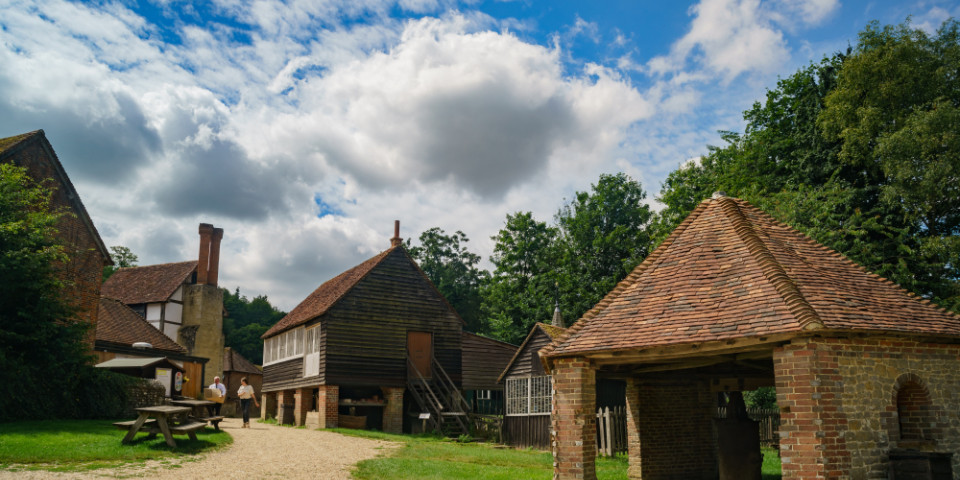Latest News
Britain’s Oldest Homes: The Hidden Gems Still Standing After 500 Years
Posted on Monday, 23rd December 2024

While modern buildings are often praised for their sleek designs and energy efficiency, some of Britain’s oldest homes are still standing strong after centuries of wear and tear. These architectural marvels, many of which date back over 800 years, hold the secrets to resilient construction techniques that modern builders could learn from.
From Norman stone houses to Tudor timber-framed buildings, Britain’s historical homes tell a story of craftsmanship, durability, and an age-old relationship between materials and the environment. But what is it about these buildings that has helped them withstand the test of time?
“We often think of construction as something that needs to last for decades, but many of these homes have lasted for centuries,” says Catherine Storer, Director of Essential Site Skills. “It’s fascinating to see how traditional techniques like lime mortar, timber framing, and hand-carved stone have contributed to their longevity. They might just hold the answers to building more sustainable and enduring structures today.”
Britain’s Oldest Gems: A Quick Tour
- Saltford Manor House, Somerset: Widely regarded as the oldest continuously inhabited house in England, Saltford Manor dates back to around 1148. Its Norman stonework and medieval features have stood the test of time, providing a rare glimpse into the craftsmanship of the 12th century. Its endurance highlights the strength of traditional stone construction methods, which remain relevant in conservation and restoration projects today.
- The Ancient Ram Inn, Gloucestershire: Built in 1145, this iconic timber-framed structure has become a legend for its age and haunting stories. Originally housing masons constructing the nearby St. Mary’s Church, it showcases medieval timber and stone techniques that have preserved its structure for nearly a millennium, despite its exposure to the elements.
- The Jews House, Lincoln: Dating back to around 1170, the Jews House is one of the oldest surviving townhouses in England. Constructed with Norman limestone, this building was part of the thriving Jewish community in Lincoln during the 12th century. Its rounded arches and carved stone features demonstrate the architectural advancements of the time.
- The Weald & Downland Living Museum, West Sussex: Home to over 50 historic buildings, including the Medieval House from Sole Street, this museum allows visitors to see traditional construction techniques up close. These buildings have been dismantled, transported, and reassembled to preserve their historical significance, offering invaluable lessons in restoration and conservation.
- The Tudor House, Southampton: Built between 1491 and 1518, this timber-framed house is a stunning example of Tudor architecture, complete with jettied upper floors and intricate wooden beams. Its wattle-and-daub walls and oak frame have withstood centuries of use, serving as a testament to the durability of traditional materials.
Are These Britain’s Oldest Houses?
While these structures are among the oldest examples of historic architecture, the title of "oldest house" in England is often debated. Saltford Manor House and the Jews House are strong contenders due to their age and continuous use, while other buildings like the Ancient Ram Inn and Tudor House offer unparalleled insights into their respective eras. Each of these gems showcases the timeless quality of traditional materials like stone, timber, and lime mortar, offering lessons for modern builders seeking durability and sustainability.
A Modern Lesson in Durability
The durability of these homes offers a stark contrast to the issues often found in modern construction, such as material degradation and a lack of adaptability. At a time when sustainability is a major concern, traditional building methods are seeing a resurgence, particularly in restoration projects.
“By studying these historical homes, we’re learning that sustainability isn’t just about new technologies,” explains Storer. “It’s also about combining the best of traditional techniques with modern innovation to create buildings that stand the test of time. However, it’s critical to ensure that all restoration and construction work complies with current health and safety standards to protect both workers and future occupants.”
Working Safely with Historic Structures
Restoration projects involving historic homes can present unique challenges, such as the presence of asbestos, lead-based paints, or structural weaknesses. Essential Site Skills emphasises the importance of conducting thorough risk assessments and adhering to HSE regulations when working on such buildings. Modern safety measures, including the use of PPE and proper training, are essential for maintaining safe working environments during restoration.
Preserving the Past, Building the Future
As modern builders and homeowners look to the future, Essential Site Skills is encouraging them to take inspiration from the past. Whether you’re restoring a historical property or building something new, understanding traditional methods could be the key to sustainable, long-lasting construction.
Develop the Skills to Preserve Historic Buildings
Preserving and working on heritage properties doesn’t just require traditional craftsmanship — it demands a solid understanding of sustainability, environmental awareness, and retrofitting techniques. Whether you're already working in construction or looking to specialise in heritage projects, the following courses can help build the skills needed to protect Britain’s oldest homes:
Level 4 NVQ in Construction Site Supervision – Retrofit
Perfect for site supervisors involved in retrofitting projects, this qualification focuses on overseeing the installation, commissioning, and handover of energy efficiency improvements. It ensures that supervisors can deliver high-quality retrofit works in line with heritage considerations.
Level 6 NVQ in Construction Site Management – Retrofit
Aimed at experienced construction managers, this diploma develops the skills to lead retrofit projects, with a strong emphasis on sustainability, compliance, and managing works sensitively within older and traditional buildings.
CITB Site Environmental Awareness Training Scheme (SEATS)
This one-day course helps construction supervisors understand their responsibilities in minimising environmental impact on-site, including best practices when working in or around heritage sites. It's an essential foundation for anyone working on protected or older structures.


